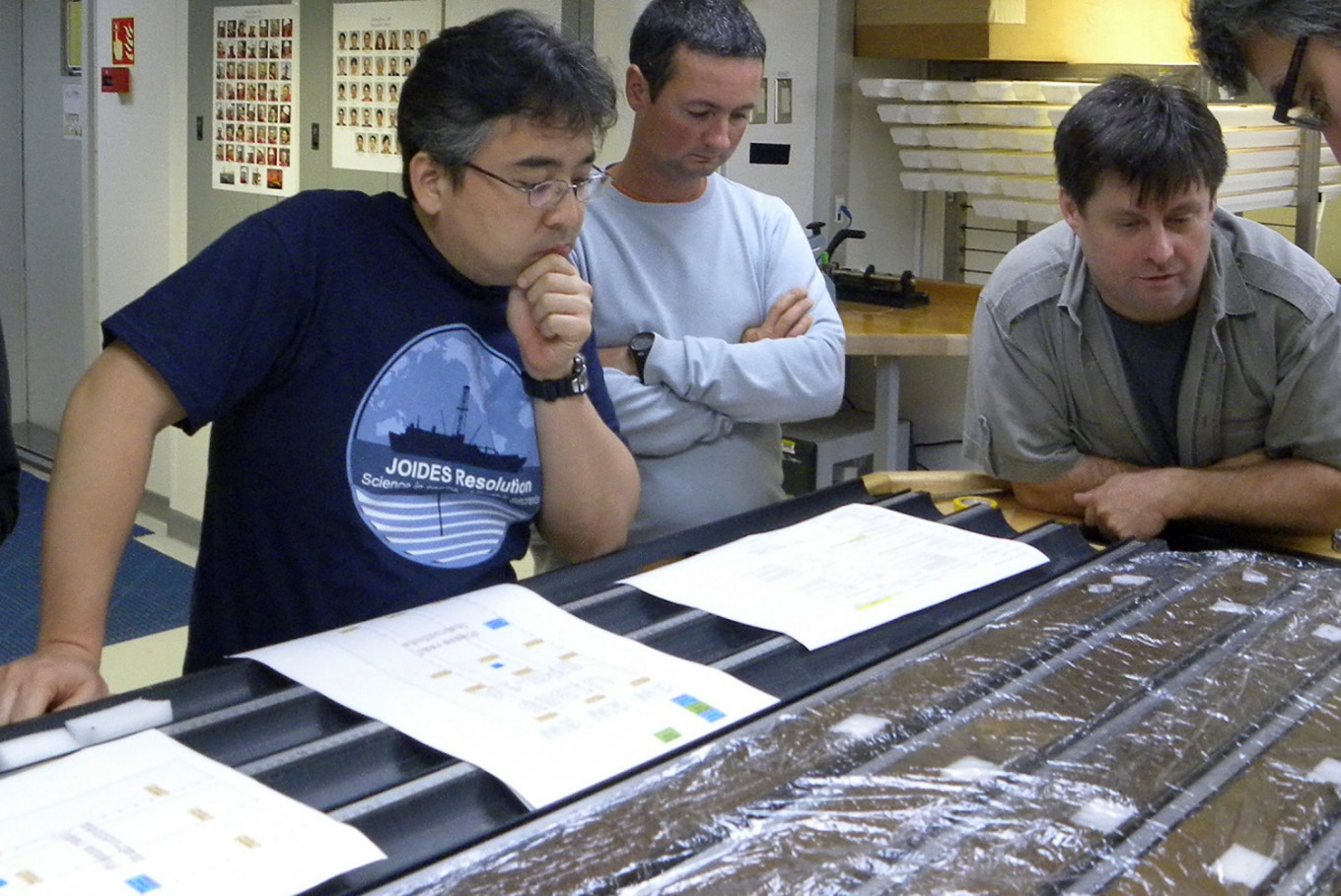Popular Reads
Top Results
Can't find what you're looking for?
View all search resultsPopular Reads
Top Results
Can't find what you're looking for?
View all search resultsScientists revive 100 million-year-old microbes from deep under seafloor
Change text size
Gift Premium Articles
to Anyone
 Researchers Yuki Morono, Laurent Toffin and Steven DÕHondt (left to right) work aboard the research drillship JOIDES Resolution with sediment cores gathered from deep beneath the seafloor under the Pacific Ocean in this undated photograph released on July 28, 2020. (Courtesy of /IODP JRSO/Handout via REUTERS)
Researchers Yuki Morono, Laurent Toffin and Steven DÕHondt (left to right) work aboard the research drillship JOIDES Resolution with sediment cores gathered from deep beneath the seafloor under the Pacific Ocean in this undated photograph released on July 28, 2020. (Courtesy of /IODP JRSO/Handout via REUTERS)
S
cientists have succeeded in reviving microbes retrieved from sediment deep under the seafloor in the heart of the South Pacific that had survived in a dormant state for 101.5 million years in research illustrating the resiliency of life on Earth.
The microbes, spanning 10 major and numerous minor groups of bacteria, may be the planet's oldest-known organisms. The scientists said on Tuesday the microbes were present in clay samples drilled from the research vessel JOIDES Resolution about 245 feet (74.5 meters) under the seafloor, below 3.5 miles (5.7 km) of water.
Up to 99 percent of the microbes, dating back to the age of dinosaurs, that were found encased in the sediment survived despite having essentially no nutrients for all that time.
The researchers, led by Japan Agency for Marine-Earth Science and Technology geomicrobiologist Yuki Morono, incubated the microbes for up to 557 days in a secure laboratory setting, providing carbon and nitrogen "food" sources such as ammonia, acetate and amino acids. The microbes grew, multiplied and displayed diverse metabolic activities.
"It is surprising and biologically challenging that a large fraction of microbes could be revived from a very long time of burial or entrapment in extremely low nutrient/energy conditions," Morono said.
Read also: Summer-vacation initiatives to preserve the ocean
The microbes were aerobic - requiring oxygen to live - and oxygen was present in the sediment samples. This indicates, the researchers said, that if sediment accumulates gradually on the seafloor at a rate of no more than a yard (meter) or two every million years, oxygen may remain present to enable such microbes to survive stupendous lengths of time.
"The most exciting part of this study is that it basically shows that there is no limit to life in the old sediments of Earth's oceans," said University of Rhode Island oceanographer Steven D'Hondt, co-author of the study published in the journal Nature Communications.
"Maintaining full physiological capability for 100 million years in starving isolation is an impressive feat," D'Hondt added.
Research published in 2000 described reviving bacteria inside 250 million-year-old salt crystals from Texas, but there is a dispute regarding the age of those microbes.










